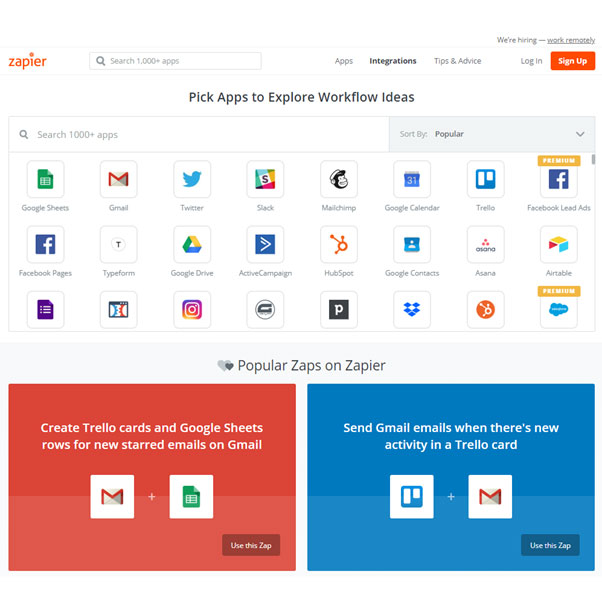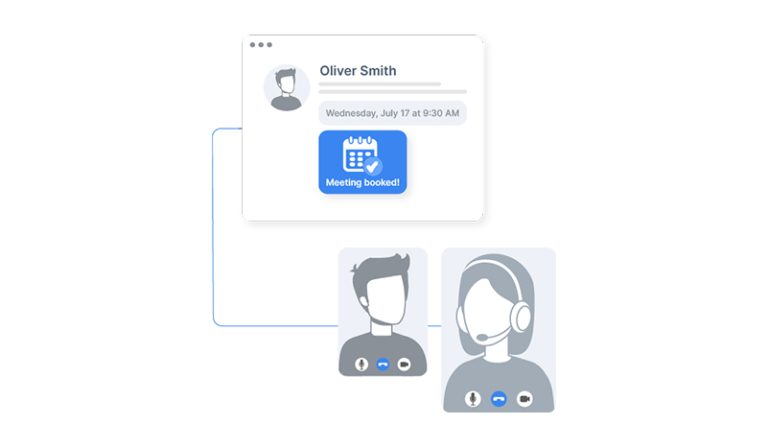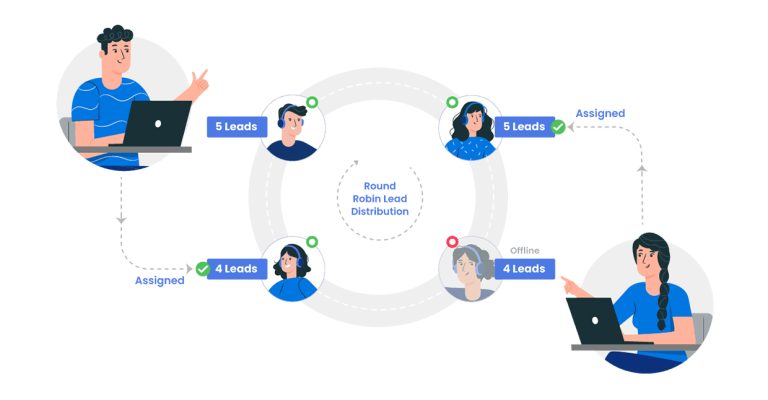People are looking for a purchasing experience where convenience and personalization meet.
Focusing on reducing the friction points that can create buyer fatigue, to meet buyers needs in order to make a sale, is critical when understanding how to create the best buying experience possible.
That means having clear journey points that takes your audience from awareness all the way through the purchase.
The great news is that with extensive knowledge about the digital world, you can have a seamless customer experience across devices and platforms. Having CRO in marketing as part of your core strategy, will increase your conversion rates significantly, growing your business.
How?
With the help of CRO marketing, and understanding what is CRO at its core, this can be done with ease!
In this article, we’re going to run through what is CRO in marketing, why it’s important, the relationship between marketing CRO and SEO, and how to align your buyer experience to the evolving digital landscape buyers move through on a daily basis to make that final buying decision.
What does CRO stand for in marketing?
So what does CRO stand for in marketing? Well, CRO marketing is a type of marketing strategy that uses real user data and analytics to inform decisions, with the ultimate goal of increasing conversions in the form of purchases or enquiries. It is often referred to as “conversion rate optimization” or simply “CRO” in short.
CRO on-page focuses on optimizing existing web pages, from their design to along with the variation of call to action taglines the content’s web page utilizes. By using data such as user engagement levels, heatmaps, A/B testing, and surveys, companies can determine what works best for their site to increase conversions.
CRO is becoming more popular than ever, with an average return on investment of 223% and 60% of online marketers saying CRO is essential to their strategy.
If you’re looking to increase conversions, then having a CRO marketing element should definitely be part of your marketing mix. With the right data led insights, you can create effective strategies that will deliver results that lead to either more leads or sales, generating most out of your marketing efforts.
So make sure to consider CRO when it comes to optimizing your website or landing pages!
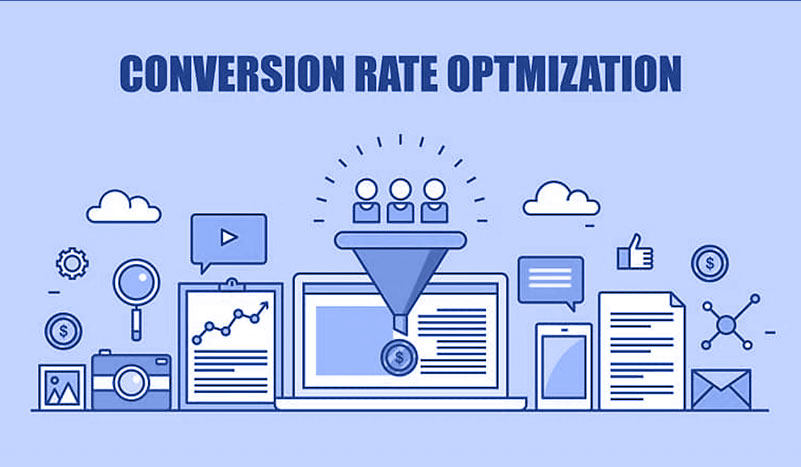
What is CRO Marketing?
Why Does CRO Marketing Matter?
The best way to make your site more productive is by focusing on conversions from the people already using it.
That’s what CRO marketing entails — leveraging your current traffic and turning them into buyers!
You don’t need a lot of new visitors; you just want those who are visiting but not converting yet.
Why does CRO marketing matter?
You should care about CRO marketing because it can be the difference between your online audience saying ‘that looks cool, but I don’t think I need it’, or ‘this is exactly what I am looking for, I need this now’.
As you can see the difference is as big as it gets, then this is reflected by your revenue, trust me when I say you’ll be sitting there thinking, ‘Why didn’t I use these tools earlier!’.
It’s as simple as that.
How to calculate conversion rate
CRO Strategies
Where to implement CRO strategies
CRO formulas

What is the relationship between CRO marketing and SEO?
What’s the deal with CRO marketing and SEO?
A lot of people might have thought about these two strategies, but not a lot know how they are connected. Here’s what you should know when it comes to the relationship between CRO and SEO:
Marketing CRO enhances current SEO efforts
CRO marketing encompasses three main aspects involved in SEO: user data, content quality, keyword optimisation and on-page!
When it comes to CRO marketing, on-page improvements will increase dwell time, drive engagement and lift conversions in a strong upward direction.
Why?
Your audience is now more interested in the experience of the content on your page, it is factors like this that play a large role in improving rankings.
There’s no need to be concerned about keyword and UX changes interfering with SEO and organic traffic.
These two factors work synchronously.
By this stage, I hope its clear what does CRO stand for in marketing, along with the role it plays.
CRO marketing helps in understanding your audience better
When you understand CRO in marketing, you can use it to improve on-page SEO by understanding what kind of content works for your target audience.
You can also learn about the most effective keywords and phrases that will help search engines rank your website for your target audience more effectively. The result is increased organic traffic from potential customers who match the intent of your content.
This results in bringing a purchase-intent audience to your site, looking for products and services just like yours.
Marketing CRO improves SEO rankings
CRO is a great way to improve your site’s conversion rates and SEO at the same time.
This strategy involves using straightforward text, clear headings and intuitive design with relevant keywords for easy navigation.
It also promotes an informative tone so visitors feel like they can trust what you have written about a particular topic on a page or blog post.
Prioritize CRO onpage marketing and watch your SEO rankings improve!
CRO in Marketing and the modern B2B buying experience
Self-buying behavior is evolving
The purchasing process has changed. The way buyers behave has evolved, particularly in B2B. They no longer make online purchases like they once did.
Self-serve solutions are becoming more and more popular, even within the Enterprise space.
In fact, recent research found that 87% of consumers desire the option to self-serve during some or all of the purchasing process.
This trend will most likely result in a shift in buying behavior to self-serve purchasing. Nonetheless, businesses need to be aware of the fact that the purchasing experience is becoming more and more dictated by the actions of the buyer, not the seller.
B2B buying decisions that used to take months are now able to be completed in only a few days.
With this in mind, the opportunity for conversions has never been more important, where CRO in marketing, should be placed as a top priority on your marketing initiatives list.
If your goal is to increase the number of sales, simply getting more prospects requests for demos will not suffice if they don’t actually follow through and book a meeting with your sales team.
QikChat allows you to qualify your prospects immediately after they fill out a form, route them to the appropriate sales rep, and then let them select a meeting time that works for both parties.
Here’s a diagram overview to show how it works.
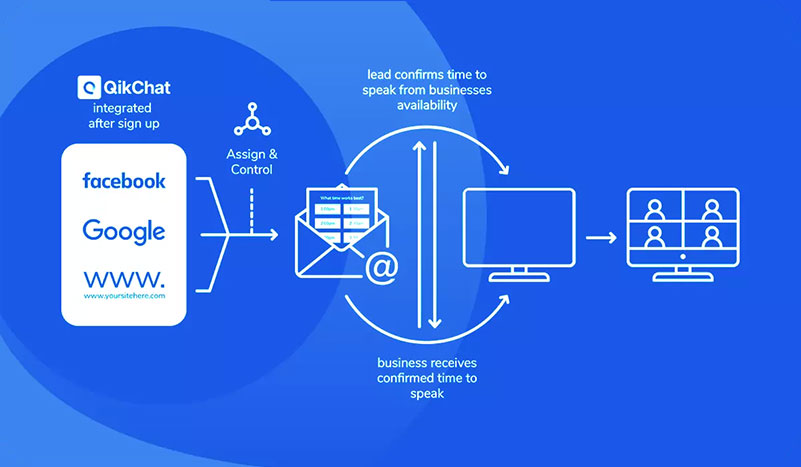
How to Develop a CRO Marketing Strategy
Initial decision points are your first impression
Many businesses think that the only thing they need to optimize is their trial or demo period, but this is just the tip of the iceberg. You need to start thinking about optimization throughout your customer’s journey.
Your website is very important. Based on the 2022 trends, it’s an enormous factor in starting the purchase or exploration journey for the buyer.
Continuing on with the conversation, if we take a look at the other stats, it’s evident that once the purchase decision has started, the “conversion experience” can’t stop there. It needs to go all the way through completion.
The findings show that buyers are demanding more support, communication, and a 1:1 experience after their self-buy journey. Also, as Google research has shown, 67% of B2B buyers are looking for more communication during installation and post-purchase, while 69% request this type of assistance later in use.
The Bottom line
We all know the drill: don’t work harder, work smarter. In order to succeed in today’s extremely fast moving market, you need a new approach that will help your company stand out from competitors!
Rather than wasting time seeking out new leads, optimize your website to focus on your current prospects and make sure you’re giving them the best user experience possible.
CRO onpage is a new approach to businesses that prioritize the buying experience and offers a more efficient way of working.
In addition, potential customers don’t follow the buyer’s journey anymore. They engage with companies on their own terms, which means we need to reach them where they are.
This is where CRO marketing tools like QikChat come in: they engage with your website audience in real time, offer a defined personalized touch that helps turn leads into customers and drives conversion rates through the roof!
Don’t wait till your competitor sits there and thinks, ‘What is CRO marketing?’, then goes and implements the right strategy, get ahead of the curve and reap the reward!


